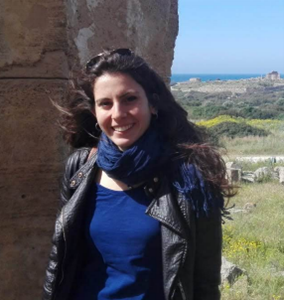Advanced Technologies, Visual and Performing Arts, Entertainment: Exploring New Forms of Geoheritage and Geosite Promotion
A special issue of Applied Sciences (ISSN 2076-3417).
Deadline for manuscript submissions: closed (31 January 2024) | Viewed by 7728
Special Issue Editors
Interests: geomorphology; geoheritage; comunication through art; scanning electron microscopy; volcanology
Interests: landslides; GIS analysis; geomorphological mapping; GIS and environmental modeling; GIS and remote sensing
Special Issues, Collections and Topics in MDPI journals
Special Issue Information
Dear Colleagues,
Today, collaboration between technologists, artists and geoscientists is becoming increasingly valuable to communicate complex geoscience topics to non-experts. Device technologies and software solutions are becoming important mediums to convey information and engage a wide audience on environmental issues. When communication has an emotional and human context with an interplay between technology and art, it becomes extremely effective and more easily accessible.
It is becoming increasingly evident that technology is vital for creating new ways of undertaking research and stimulating discussion in relation to science–art collaborations. Music and poetry, for example, can be effective tools for communicating science to diverse and non-specialist audiences. They can encourage people to be receptive to scientific issues related to the conservation and protection of geological and cultural heritage and, in so doing, contribute to preserving scientific content in a deeper way.
Therefore, this Special Issue is devoted to presenting new methods of communication using technology, as well as visual and performing arts, in relation to real or virtual geosites, and all kinds of entertainment methods to engage the public in promoting and protecting geological heritage.
This Special Issue will publish high-quality, original research papers in the overlapping fields of geology, geomorphology, geoheritage, technology, art, communication, entertainment, and education.
Dr. Laura Valentini
Dr. Chiara Martinello
Guest Editors
Manuscript Submission Information
Manuscripts should be submitted online at www.mdpi.com by registering and logging in to this website. Once you are registered, click here to go to the submission form. Manuscripts can be submitted until the deadline. All submissions that pass pre-check are peer-reviewed. Accepted papers will be published continuously in the journal (as soon as accepted) and will be listed together on the special issue website. Research articles, review articles as well as short communications are invited. For planned papers, a title and short abstract (about 100 words) can be sent to the Editorial Office for announcement on this website.
Submitted manuscripts should not have been published previously, nor be under consideration for publication elsewhere (except conference proceedings papers). All manuscripts are thoroughly refereed through a single-blind peer-review process. A guide for authors and other relevant information for submission of manuscripts is available on the Instructions for Authors page. Applied Sciences is an international peer-reviewed open access semimonthly journal published by MDPI.
Please visit the Instructions for Authors page before submitting a manuscript. The Article Processing Charge (APC) for publication in this open access journal is 2400 CHF (Swiss Francs). Submitted papers should be well formatted and use good English. Authors may use MDPI's English editing service prior to publication or during author revisions.
Keywords
- tecnologies
- software solutions
- communication methods
- geosites
- visual and performing arts
- field trips
- geoheritage
- sustainability
- awareness






